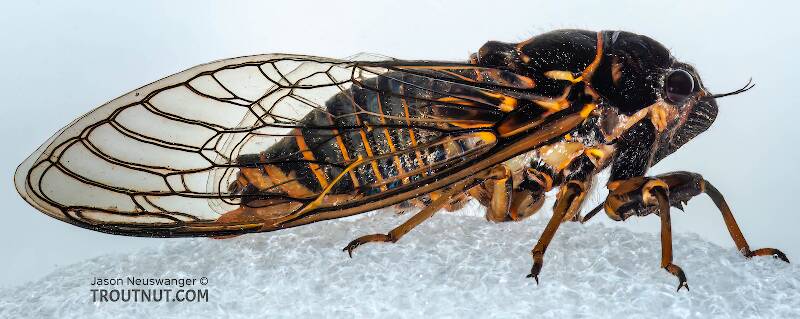
Salmonflies
Pteronarcys californica
The giant Salmonflies of the Western mountains are legendary for their proclivity to elicit consistent dry-fly action and ferocious strikes.
Featured on the forum

With a bit of help from the microscope, this specimen keys clearly and unsurprisingly to Hydropsyche.

Troutnut is a project started in 2003 by salmonid ecologist Jason "Troutnut" Neuswanger to help anglers and
fly tyers unabashedly embrace the entomological side of the sport. Learn more about Troutnut or
support the project for an enhanced experience here.
Cicadas
This common name refers to only one family. Click its scientific name to learn more.
True Bug Family Cicadidae
These are pretty much always called Cicadas.
Though they aren't aquatic, cicadas can end up on the surface of trout streams in great numbers in the rare years when they swarm our forests by the tens of millions. It stands to reason that trout would gorge themselves on cicadas at such times, and I have heard reports of it but never been lucky enough to witness the "cicada hatch" myself.

I found this cicada and several like it in the grass near my car as I put my waders on. Some of them were singing in the trees above the river, too, but I did not see any fall into the water.

